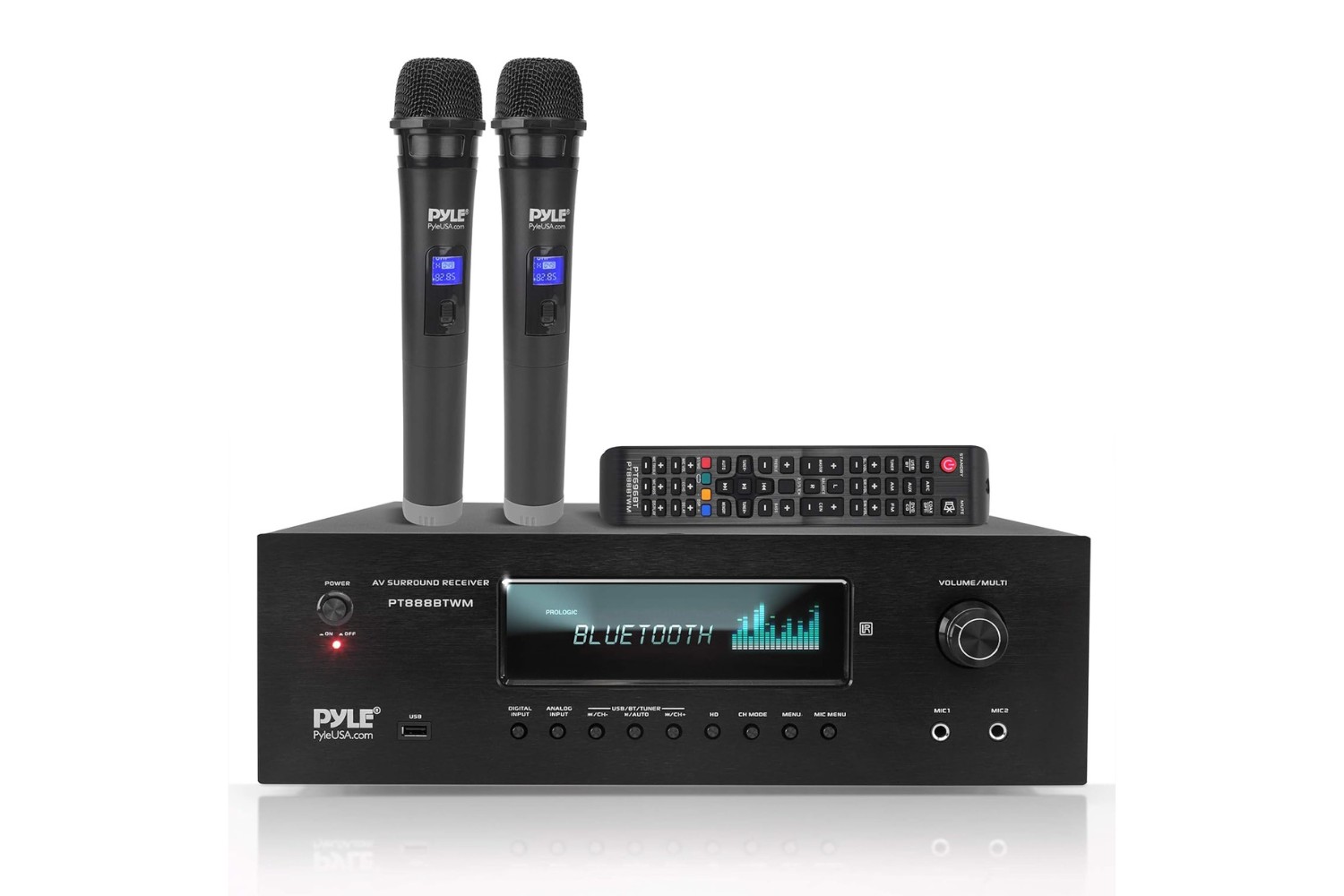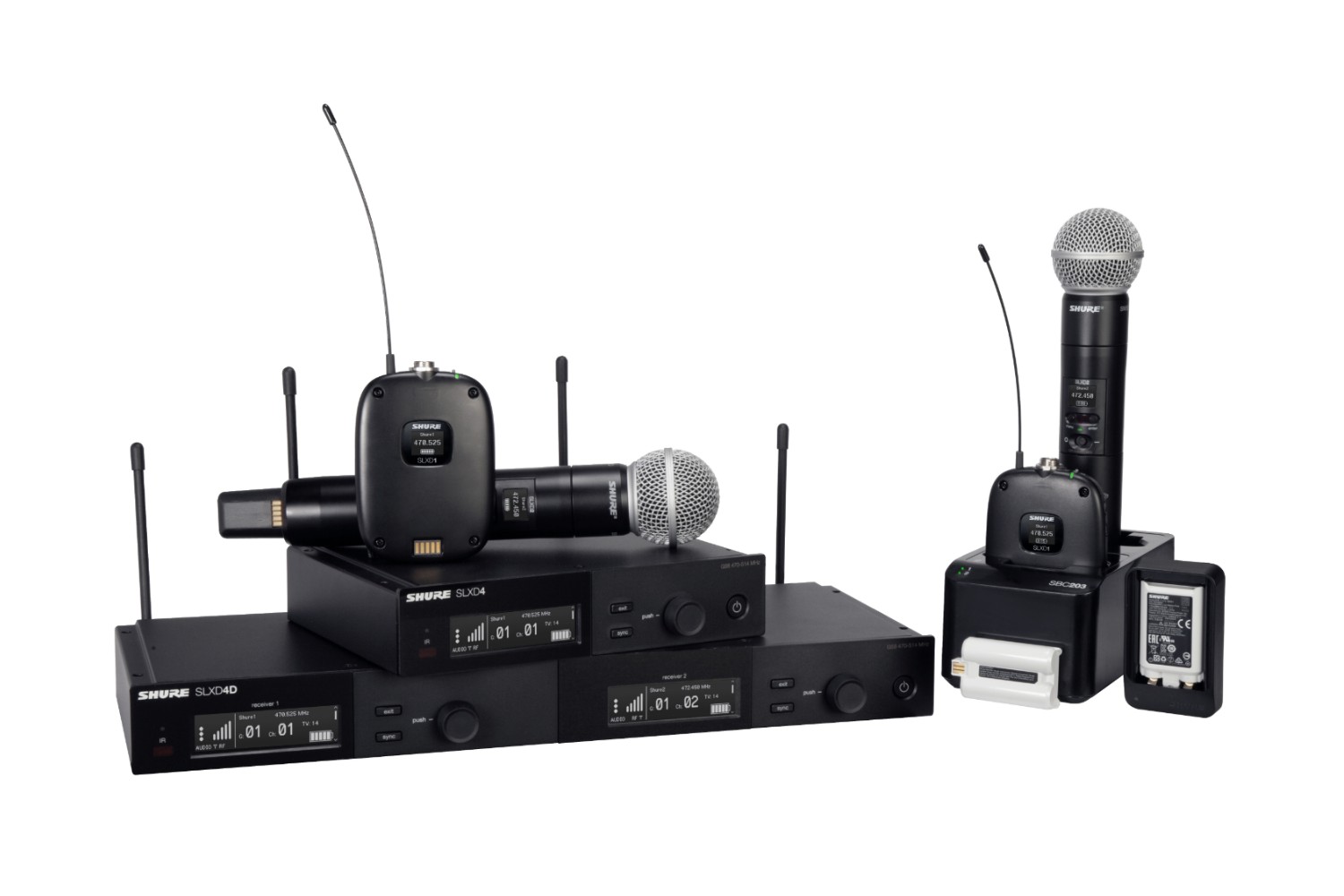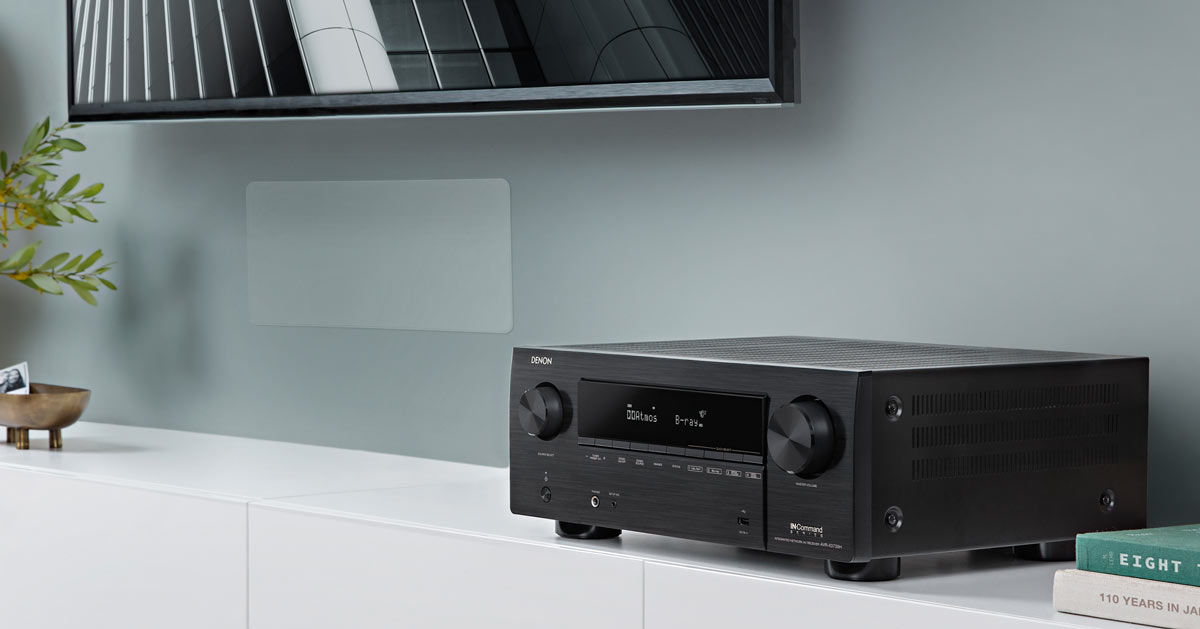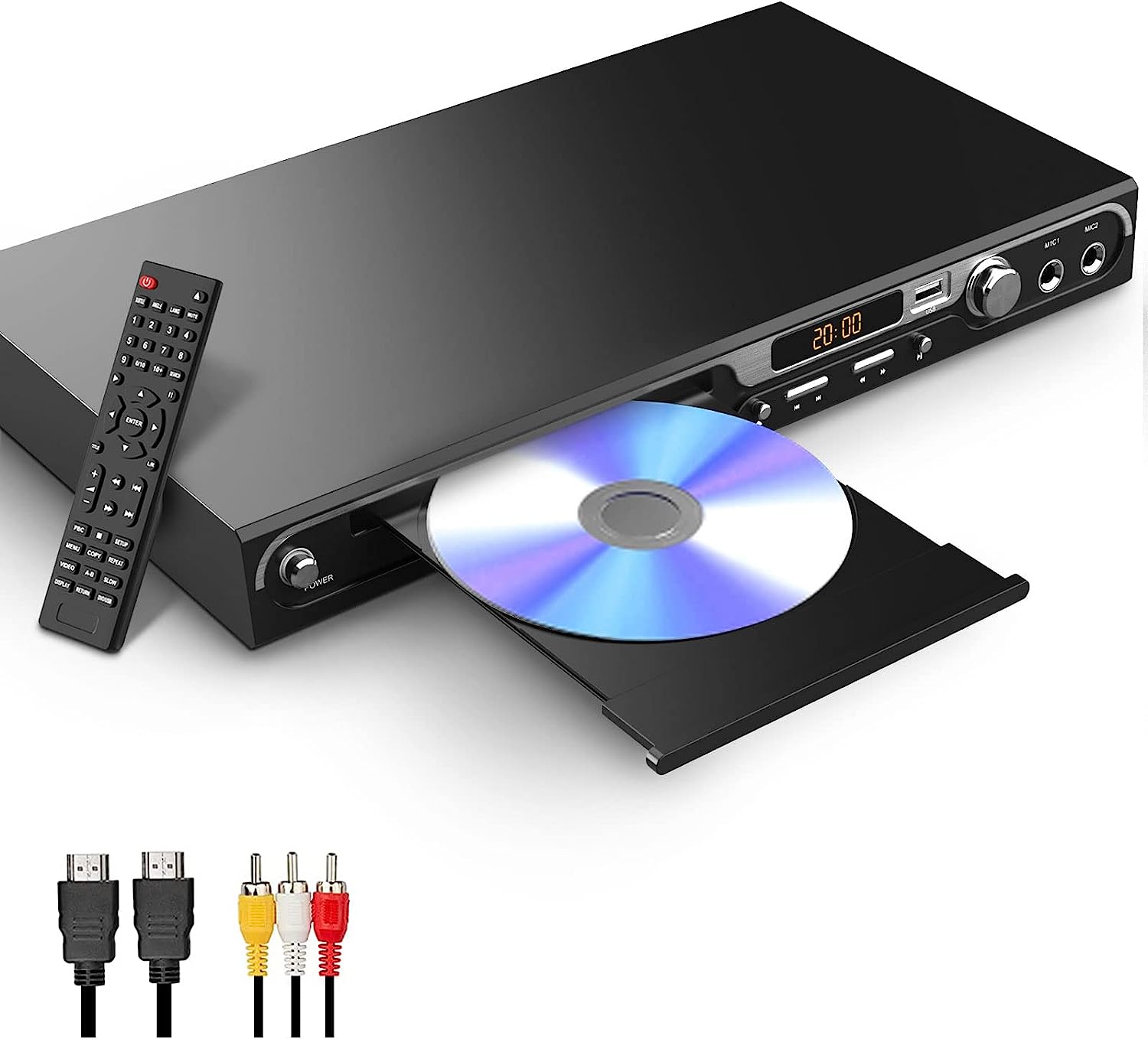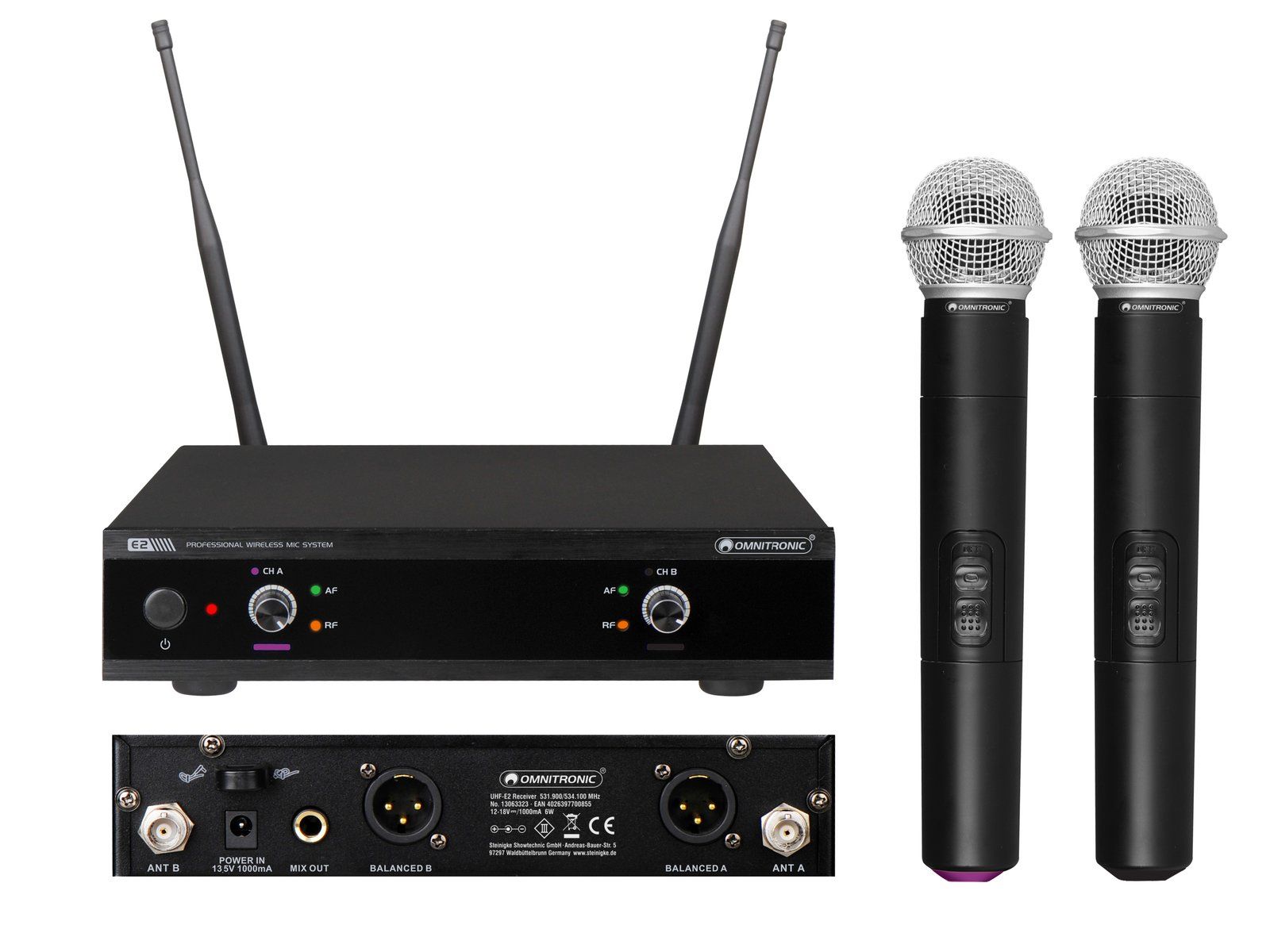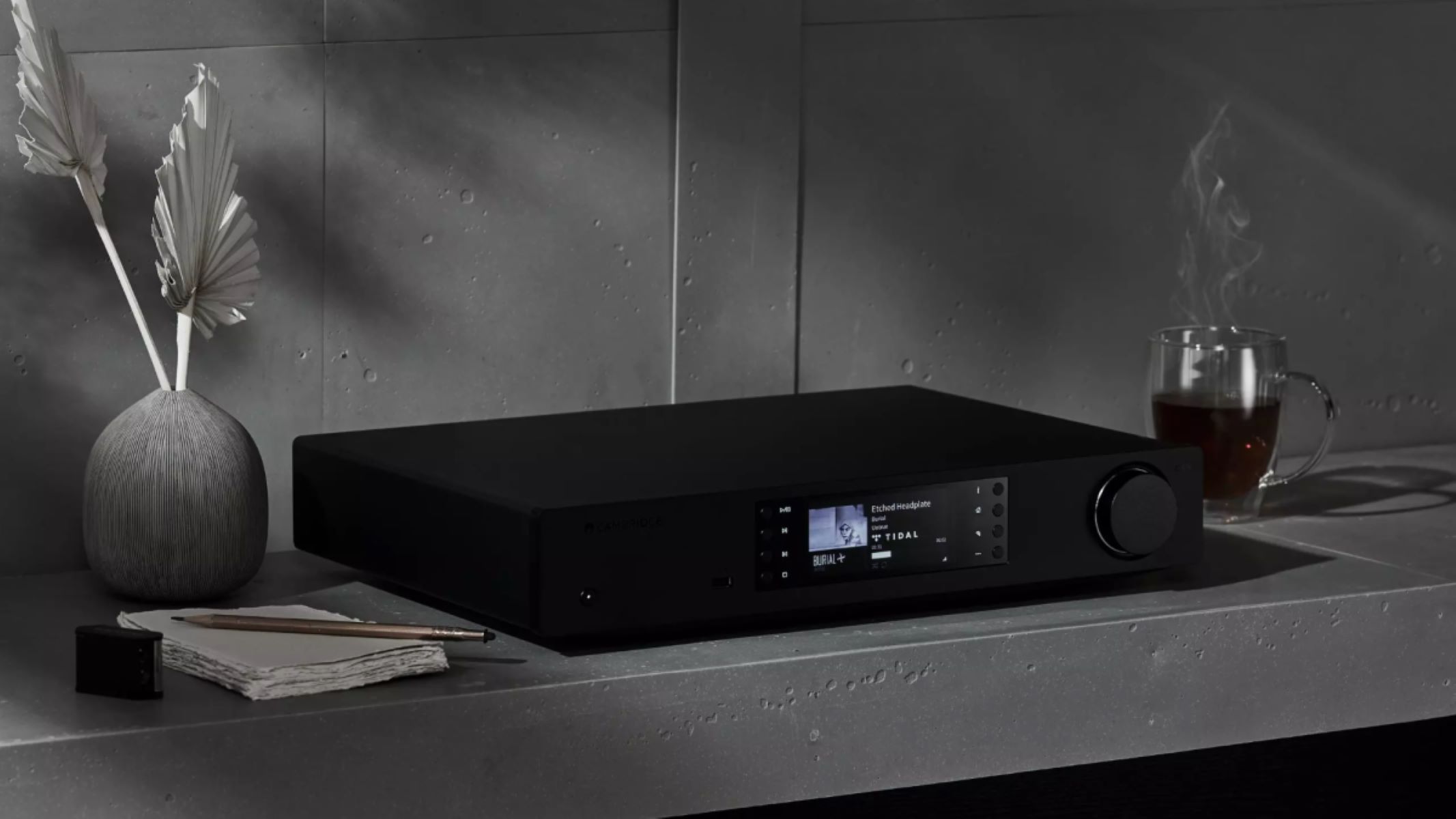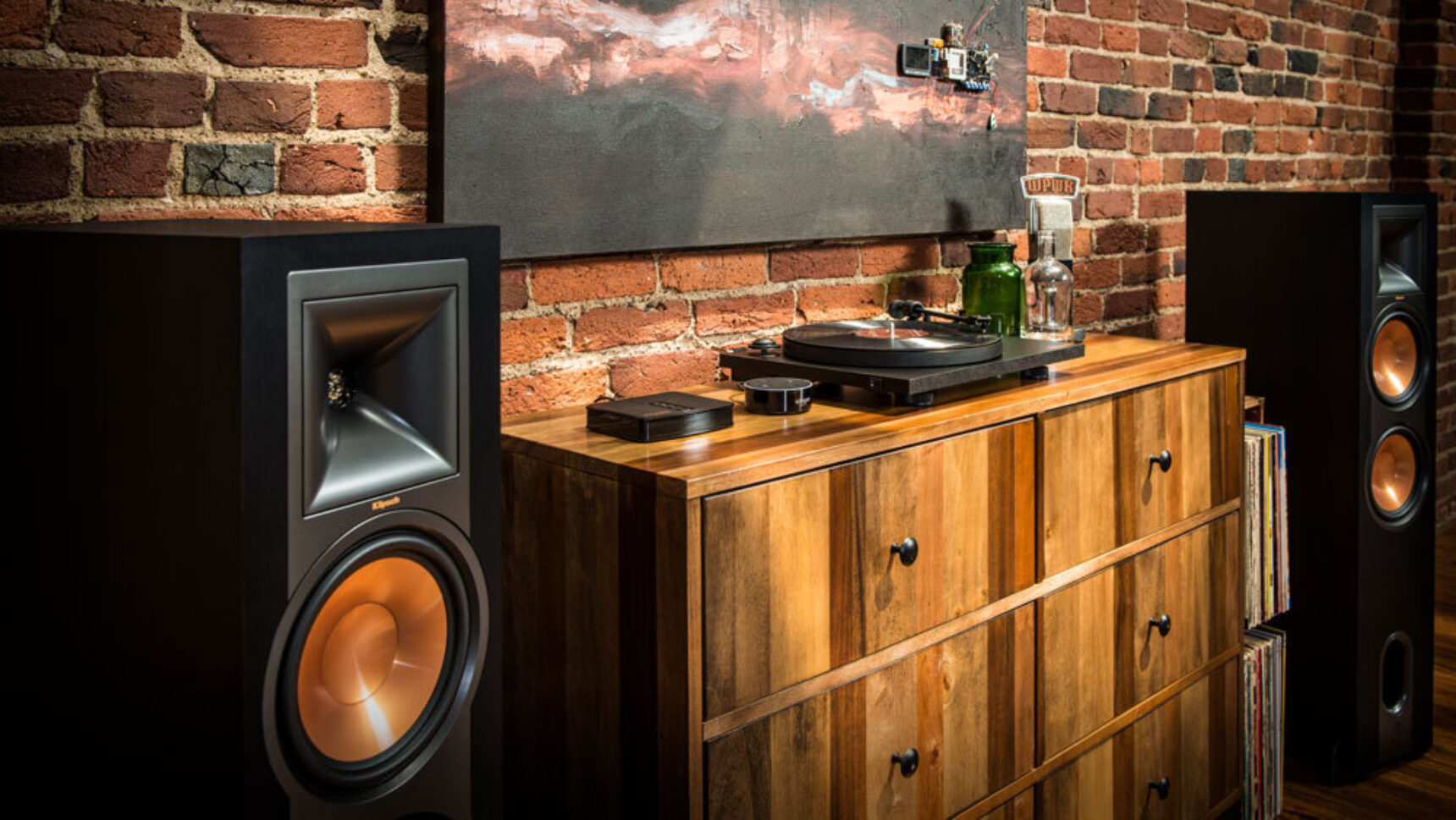Introduction
Setting up karaoke with an AV receiver can transform any gathering into a lively and entertaining event. Whether you're hosting a party or simply enjoying a fun night in with friends and family, a well-configured karaoke system can elevate the atmosphere and create lasting memories. An AV receiver serves as the central hub for audio and video components, making it an essential element in creating a seamless and immersive karaoke experience.
In this guide, we will walk you through the step-by-step process of setting up karaoke with an AV receiver. From choosing the right AV receiver to connecting microphones and speakers, we'll cover everything you need to know to create a professional-grade karaoke setup in the comfort of your own home.
Karaoke enthusiasts and music lovers alike will appreciate the ability to seamlessly integrate their favorite songs with high-quality audio and visual components. By following the instructions outlined in this guide, you can ensure that your karaoke setup not only delivers exceptional sound quality but also provides a captivating visual experience for all participants.
Whether you're a novice looking to delve into the world of karaoke or a seasoned host seeking to enhance your existing setup, this comprehensive guide will equip you with the knowledge and confidence to create a standout karaoke experience. So, without further ado, let's dive into the step-by-step process of setting up karaoke with an AV receiver.
Step 1: Choose the Right AV Receiver
When embarking on the journey of setting up a karaoke system, selecting the appropriate AV receiver is the crucial first step. An AV receiver acts as the central control unit for audio and video inputs, processing the signals and delivering them to your speakers and display devices. To ensure an optimal karaoke experience, consider the following factors when choosing an AV receiver:
- Audio Output and Channel Configuration: Look for an AV receiver that offers sufficient power output and supports the necessary channel configuration for karaoke, typically 5.1 or 7.1 channels. This ensures that your audio signals are amplified and distributed effectively to create an immersive sound environment.
- Video Connectivity: Check for HDMI inputs and outputs to facilitate seamless connections with your TV or display monitor. Additionally, ensure that the AV receiver supports video upscaling and passthrough to enhance the visual quality of karaoke content.
- Microphone Inputs: Opt for an AV receiver that includes dedicated microphone inputs with individual volume controls. This feature allows you to connect multiple microphones directly to the receiver, enabling easy adjustments and personalized audio settings for each microphone.
- Audio Processing and Effects: Consider receivers with built-in audio processing features such as equalization, reverb, and vocal enhancement. These capabilities can elevate the sound of your karaoke performances, providing professional-grade audio effects for an engaging experience.
- Network Connectivity and Integration: For added versatility, select an AV receiver with network connectivity options, enabling access to online music streaming services and firmware updates. Network integration also allows for convenient control and management of the receiver through compatible mobile apps.
By carefully evaluating these aspects, you can narrow down your options and choose an AV receiver that aligns with your karaoke setup requirements. Whether you prioritize audio fidelity, video compatibility, or advanced audio processing, selecting the right AV receiver sets the foundation for a remarkable karaoke experience.
Step 2: Connect Your AV Receiver to Your TV
Once you have chosen the ideal AV receiver for your karaoke setup, the next step involves establishing a seamless connection between the receiver and your TV or display monitor. This connection is essential for transmitting video content, lyrics, and visual effects during karaoke sessions. Follow these steps to effectively connect your AV receiver to your TV:
- Identify HDMI Ports: Locate the HDMI output port on your AV receiver and the corresponding HDMI input port on your TV. Ensure that both devices are powered off before proceeding with the connection process.
- Use High-Quality HDMI Cables: Acquire high-speed HDMI cables with sufficient length to bridge the distance between your AV receiver and the TV. High-quality cables ensure reliable transmission of audio and video signals without degradation.
- Connect HDMI Cable: Insert one end of the HDMI cable into the HDMI output port of the AV receiver and the other end into the HDMI input port of your TV. Secure the connections to prevent accidental dislodging.
- Power On and Configure TV Input: Power on both the AV receiver and the TV. Use the TV remote to select the corresponding HDMI input that is connected to the AV receiver. This allows the TV to receive video signals from the receiver.
- Adjust Display Settings (if necessary): Access the TV’s settings menu to adjust display parameters such as aspect ratio, resolution, and picture mode to optimize the visual output for karaoke content. Consult the TV’s user manual for specific instructions on adjusting display settings.
By establishing a secure and functional connection between your AV receiver and TV, you ensure that the visual components of your karaoke setup operate seamlessly. This connection enables the display of lyrics, music videos, and dynamic visual effects, enhancing the overall karaoke experience for participants.
Step 3: Connect Your Microphones to the AV Receiver
Connecting microphones to your AV receiver is a pivotal step in configuring your karaoke setup, as it directly impacts the audio quality and performance during singing sessions. Whether you plan to have solo performances or duets, ensuring proper microphone connectivity is essential for a seamless karaoke experience. Follow these steps to connect your microphones to the AV receiver:
- Identify Microphone Inputs: Locate the dedicated microphone input ports on your AV receiver. These ports are typically located on the front or rear panel of the receiver and are labeled as “Mic,” “Microphone,” or “Audio In.”
- Use Balanced Microphone Cables: Acquire high-quality balanced XLR or TRS cables for connecting your microphones to the AV receiver. Balanced cables help minimize interference and noise, resulting in cleaner audio signals.
- Connect Microphones: Plug one end of the balanced microphone cable into the output of the microphone and the other end into the designated microphone input on the AV receiver. Ensure a secure connection to prevent accidental disconnection during use.
- Adjust Microphone Levels: Use the AV receiver’s interface or remote control to adjust the microphone input levels. Balancing the microphone levels ensures that the audio output from the microphones is consistent and free from distortion.
- Test Microphone Inputs: Conduct a brief test by speaking or singing into each connected microphone. Verify that the audio is being captured and amplified by the AV receiver. Make any necessary adjustments to the microphone levels based on the test results.
By establishing a reliable connection between your microphones and the AV receiver, you create a conducive environment for karaoke performances, allowing vocalists to express themselves with clarity and precision. The proper integration of microphones into your karaoke setup sets the stage for memorable and engaging singing sessions.
Step 4: Set Up Your Speakers
Setting up your speakers is a critical aspect of creating an immersive and captivating karaoke experience. Proper speaker placement and configuration contribute to the overall audio quality and ensure that participants can fully enjoy the music and vocal performances. Follow these steps to effectively set up your speakers for karaoke:
- Positioning: Determine the optimal placement of your speakers based on the layout of your karaoke space. Position the main speakers in front of the performance area, ensuring that they are elevated to ear level for the audience. Additionally, consider placing surround speakers to create a more enveloping audio experience.
- Speaker Connection: Connect the main and surround speakers to the corresponding speaker output terminals on your AV receiver. Use high-quality speaker cables with proper gauge and length to minimize signal loss and maintain audio integrity.
- Calibration and Testing: Utilize the AV receiver’s speaker calibration feature, if available, to optimize the audio output based on the acoustic characteristics of your karaoke space. Conduct a sound test to ensure that each speaker is functioning correctly and delivering balanced sound across the listening area.
- Adjustments for Vocal Clarity: Fine-tune the speaker settings to enhance vocal clarity during karaoke performances. Adjust the equalization settings to emphasize vocal frequencies and reduce potential audio masking from background music or effects.
- Room Acoustics: Consider the acoustic properties of your karaoke space and make adjustments to the speaker placement and settings to mitigate any acoustic challenges such as reverberation or sound reflections. Acoustic treatments or adjustments can significantly improve the overall sound quality.
By meticulously setting up your speakers and optimizing their performance, you create an audio environment that complements the karaoke experience, elevating the enjoyment of both singers and audience members. The proper placement and configuration of speakers contribute to the immersive and dynamic nature of karaoke performances, making every song rendition a memorable and engaging experience.
Step 5: Adjust the Settings on Your AV Receiver
After connecting your AV receiver, microphones, and speakers, it’s essential to adjust the settings on the receiver to optimize the audio and video output for karaoke. Fine-tuning the settings ensures that the audiovisual components work harmoniously, delivering an immersive and high-quality karaoke experience. Follow these steps to adjust the settings on your AV receiver:
- Audio Configuration: Access the audio settings menu on your AV receiver to configure the channel output, audio processing modes, and equalization. Select the appropriate audio mode for karaoke, such as stereo or multi-channel surround, based on your speaker configuration and room acoustics.
- Microphone Effects: Explore the microphone effects settings on the AV receiver, if available, to apply reverb, echo, or vocal enhancement effects to the microphone inputs. Adjust the effects to complement the singing style and preferences of the performers.
- Video Settings: Navigate to the video settings menu to optimize the video output for karaoke content. Adjust parameters such as video resolution, aspect ratio, and color settings to ensure that lyrics and music videos are displayed crisply and accurately on the connected TV or display monitor.
- Network Integration: If your AV receiver supports network connectivity, configure the network settings to enable access to online music streaming services, firmware updates, and remote control capabilities. Ensure that the receiver is connected to your home network for seamless integration.
- Remote Control Programming: If your AV receiver comes with a remote control, program it to include convenient shortcuts for adjusting volume, microphone levels, and audio effects. Customizing the remote control settings enhances the user experience during karaoke sessions.
By carefully adjusting the settings on your AV receiver, you can tailor the audio and video output to suit the specific requirements of karaoke performances. The optimized settings ensure that vocal clarity, audio effects, and visual presentation are aligned, resulting in an engaging and enjoyable karaoke experience for all participants.
Step 6: Test Your Karaoke Setup
Before launching into full-fledged karaoke sessions, it’s crucial to thoroughly test your setup to ensure that all components are functioning optimally and delivering the intended audiovisual experience. Testing the karaoke setup allows you to identify any potential issues and make necessary adjustments, guaranteeing a seamless and enjoyable karaoke experience. Follow these steps to effectively test your karaoke setup:
- Audio Playback: Play a selection of music tracks through the karaoke setup to evaluate the audio quality and balance. Listen for clarity, tonal accuracy, and the presence of any unwanted noise or distortion. Adjust the audio settings on the AV receiver as needed to achieve the desired sound output.
- Microphone Performance: Have individuals perform vocal tests using the connected microphones to assess the clarity and amplification of their voices. Verify that each microphone input is capturing and reproducing vocals accurately, and adjust the microphone levels to achieve a balanced mix.
- Lyrics Display: Display karaoke lyrics or music videos on the connected TV or display monitor to confirm that the visual elements are presented clearly and synchronized with the audio playback. Ensure that the lyrics are legible and properly aligned with the music.
- Interactive Features: If your karaoke setup includes interactive features such as vocal effects, echo, or reverb, test these features during vocal performances to gauge their impact on the overall sound quality. Make adjustments based on the preferences of the performers and audience.
- User Experience: Engage participants in a mock karaoke session to gather feedback on the overall user experience. Encourage singers and audience members to provide input on the sound quality, ease of use, and visual presentation, allowing you to address any concerns or make enhancements.
By conducting comprehensive tests of your karaoke setup, you can address any potential issues and refine the audiovisual components to deliver an exceptional karaoke experience. Testing also provides an opportunity to fine-tune the setup based on user feedback, ensuring that the karaoke system meets the expectations of all participants.
Conclusion
Setting up karaoke with an AV receiver transforms any space into an immersive and entertaining environment where music enthusiasts can unleash their inner vocal talents. By following the comprehensive steps outlined in this guide, you have acquired the knowledge and skills necessary to create a professional-grade karaoke setup in the comfort of your own home. From choosing the right AV receiver to testing the entire system, each step plays a vital role in ensuring a seamless and enjoyable karaoke experience for all participants.
With the carefully selected AV receiver serving as the central hub for audio and video signals, you have laid the foundation for a captivating karaoke setup. The integration of microphones, speakers, and TV connectivity enhances the versatility and quality of the karaoke experience, allowing vocal performances to shine amidst a visually engaging backdrop.
By adjusting the settings on your AV receiver, you have fine-tuned the audio and video output to align with the specific requirements of karaoke performances. The optimized settings, along with thorough testing, ensure that vocal clarity, audio effects, and visual presentation are harmoniously aligned, resulting in an engaging and enjoyable karaoke experience for all participants.
As you embark on your karaoke journey, remember that the true essence of karaoke lies in the joy of music and the camaraderie it fosters. Whether it’s a casual gathering with friends or a lively celebration, your well-configured karaoke setup is poised to elevate the atmosphere and create lasting memories through the power of music and shared performances.
With your newfound expertise in setting up karaoke with an AV receiver, you are well-equipped to host memorable karaoke sessions that resonate with the energy and enthusiasm of all participants. Embrace the magic of karaoke, and let the music unite voices in celebration and harmony.







